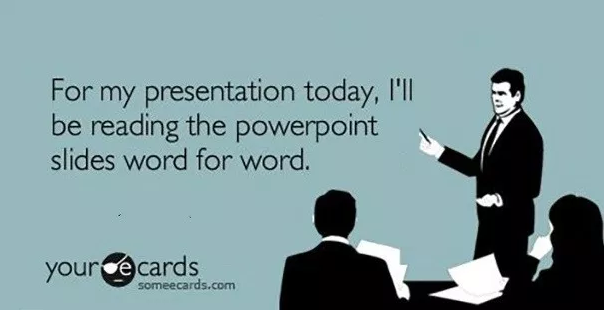
Successful investor pitches engage emotion and motivation
A good funding pitch does a lot of things. It showcases a founder’s knowledge of their industry. It shows their strategic thinking. It hints at their ability to execute on a plan. It also engages the emotions and motivations of the people watching the presentation. It has to. If you don’t engage your audience, the pitch will fail.
I review a lot of funding pitches. After a while, it’s easy to see patterns. Especially what makes a good pitch deck and what doesn’t. I can sense the moment where pitches start to lose their audiences’ full engagement. It’s painful to watch.
Funding presentations are sales pitches
When a pitch fails to engage the audience it’s usually for an obvious reason: the presenter made the presentation for themselves, or for a customer, not for an investor audience.
Funding presentations are sales pitches. Sales pitches get the prospect to imagine the benefits taking the next step. In the case of a funding pitch, the next step is getting to know more about you and your company. To give an effective pitch, you need to know what your audience would see as a “benefit”. In other words, “what’s in it for them?” Why should they care about what you are selling?
If you getting investors to imagine how investing in you will benefit them, you’ll keep their attention. After all, who doesn’t listen when you are about to tell them something that can help them?
Show them the money
What would an investor see as a benefit? The answer is simple: a good outcome… for them.
Most investors invest to make a return on their investment more than they do to “change the world”.
Founders often start companies to “change the world” or “disrupt”. As a result, they often make that the focus of their pitch. Founders need to focus the pitch on the motivations of the investors, not their own.
Pitches should show investors how they can get a return on their investment AND change the world. How do you do that?
Make the pain real
Address the investors’ emotions and motivations. Start with their empathy. Help the investor understand the pain point that your customer is feeling. They need to feel like the problem is meaningful and that your solution will help to reduce that pain. If you can’t get the investor to care about the problem you are solving, you’ve already lost their interest.
If you are solving a problem for a group that your investors are not a part of, you need to figure out how to help them understand why they pain is meaningful and the solution important. The investor doesn’t need to personally experience the pain, but they need to know that you are solving a big problem experienced by a large audience.
Address their fears and desires. Reduce their risk.
You need to address investors’ doubt. They need to feel like you and your team actually have the knowledge and skill to pull this off.
You need to address their profit motive (aka “greed”). They need to be able to see how you plan to monetize the venture. Investors want to see your plans to grow, be profitable, and become an asset worthy of a probable exit.
You need to address their desire for personal success (the flip side of which is their “fear of failure”). Show that investing in your company is a good idea. The sort of investment that will be good for their reputation and show their investing savvy.
Many founders focus too much on trying to convince investors that they have a great solution. Focusing on the product and your solution without also addressing the empathy, doubt, greed, and fear of investors is a mistake. Founders that pitch pure facts are missing the opportunity to have an investor care about them and their company.
Your only goal is to “leave the wanting more”
Your pitch is an opportunity to break through the noise of a thousand other pitches. It’s a request for an investor to give you their time and attention. It’s how you make them care enough to put you in the “consider” pile. Your goal is to get a chance to make your business case in a more focused way.
A fair number of the pitches I see focus on why the founder thinks that they have a great idea. They try to impress the investor with all the work they’ve done.
But keep in mind that many VC firms see over 1,000 decks a year to make 10 investments. All 1,000 of those founders think they have a great idea. Investors don’t have the time or bandwidth to do a deep dive on every deck they see. They make a quick call about which ones they can spend more time thinking about.
So how, specifically, do you tap into those emotions and get some of their mindshare?
Tell a great story – how you will solve a big problem for a lot of people
Make the pain point palpable for your audience. Present a strong use case or tell a story that makes the pain real. Don’t expect the investor to feel that the pain point is meaningful just because you said it is. Give social proof that this is a big deal. (address the empathy).
Show that you’re capable
Show that you and your team have the specific skills, knowledge, contacts, passion, and resources to take the idea all the way. Show that you personally have done your homework. Show why you are confident in your assertions. Show that you understand what really drives the business.
Show competitive smarts
Show that you are aware of the real competition and have a plan to compete and thrive. Show that you don’t underestimate the issues in getting users to try your product and stick with it. (address the doubt).
Be clear about how you will make money
Make it clear how the business will make money at some point. Don’t be vague. Have a plan.
The plan may change. That’s OK. For now, show investors that you understand the need to monetize the business and build value. (address the profit motive/greed)
Be the sort of well informed, confident, smart, energetic CEO that comes across as the “jockey you want to bet on”. (address the fear of failure)
Be trustworthy
This one should go without saying. People invest in people they can trust. Don’t “fudge” responses to questions. When you don’t know the answer to something, say so and commit to getting an answer. Don’t exaggerate. Exaggeration is just a form of misrepresentation. And clearly, don’t lie. Investors have Google, and due diligence will uncover lies or holes in your story. If they find any, game over. You will have created doubt where it might not have existed.
Get the meeting
Remember that the goal of the pitch is not to get funded. The goal of the pitch is to get some focused with an investor. It doesn’t have to be the investor you pitched to. Someone in the audience might recommend you to other investors. If you can engage the investors’ emotions you can get them to care. If you can get them to care they will want you to succeed. At a minimum, you’ll make a more memorable impact.
When you are competing with 1,000 other pitch decks, being memorable is a big deal.
Edited from an article I originally posted on LinkedIn

